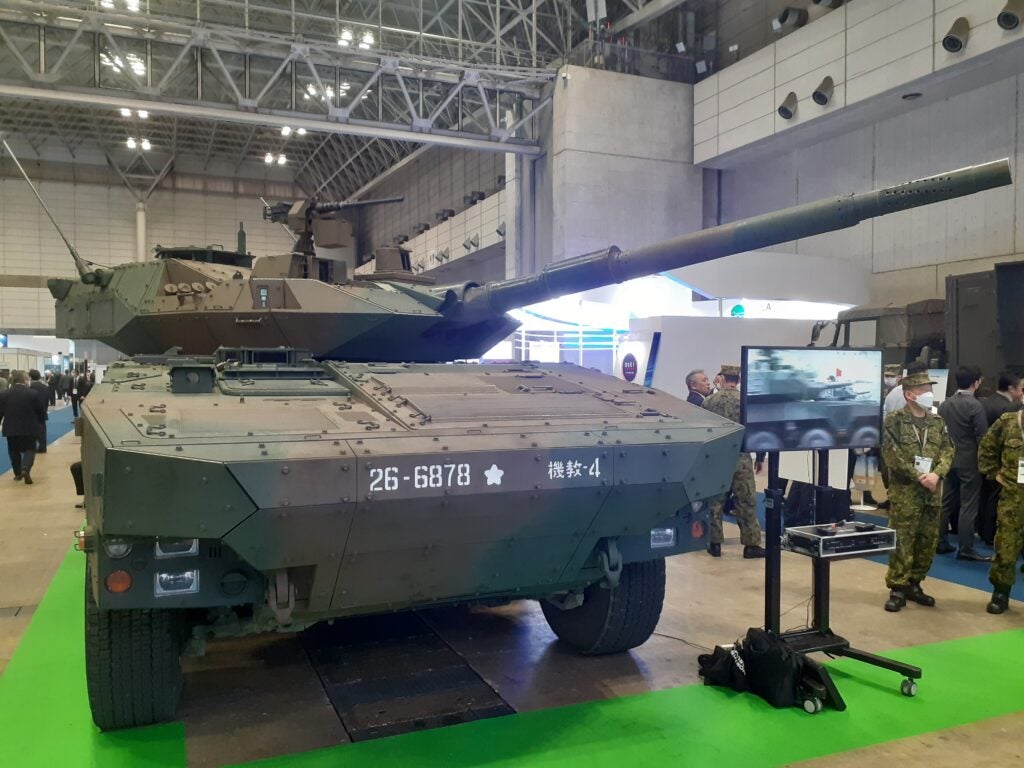DSEI Japan 2023: JGSDF Armored Officers Present the Type-16 MCV
From Wednesday 15 to Friday 17 March, at the DSEI Japan integrated defense event, Japan showcased its Type 16 Maneuver Combat Vehicle (MCV) to military, industry, government and media representatives from all over the globe. On the first day of the event, Japan’s Acquisition, Technology & Logistics Agency (ATLA) announced that a total of 250 Type 16’s will be acquired by the Japan Ground Self Defense Force (JGSDF). This means the JGSDF is getting 150 additional vehicles on top of the 100 or so which the JGSDF has reportedly received thus far.
At DSEI Japan 2023, Overt Defense was able to speak to a JGSDF major who works as an armored vehicle instructor and has extensive experience with both the Type 16 MCV and with the old Type 74 tank. Overt Defense was also able to speak with a JGSDF lieutenant colonel who does research work for the JGDSF related to armored warfare.
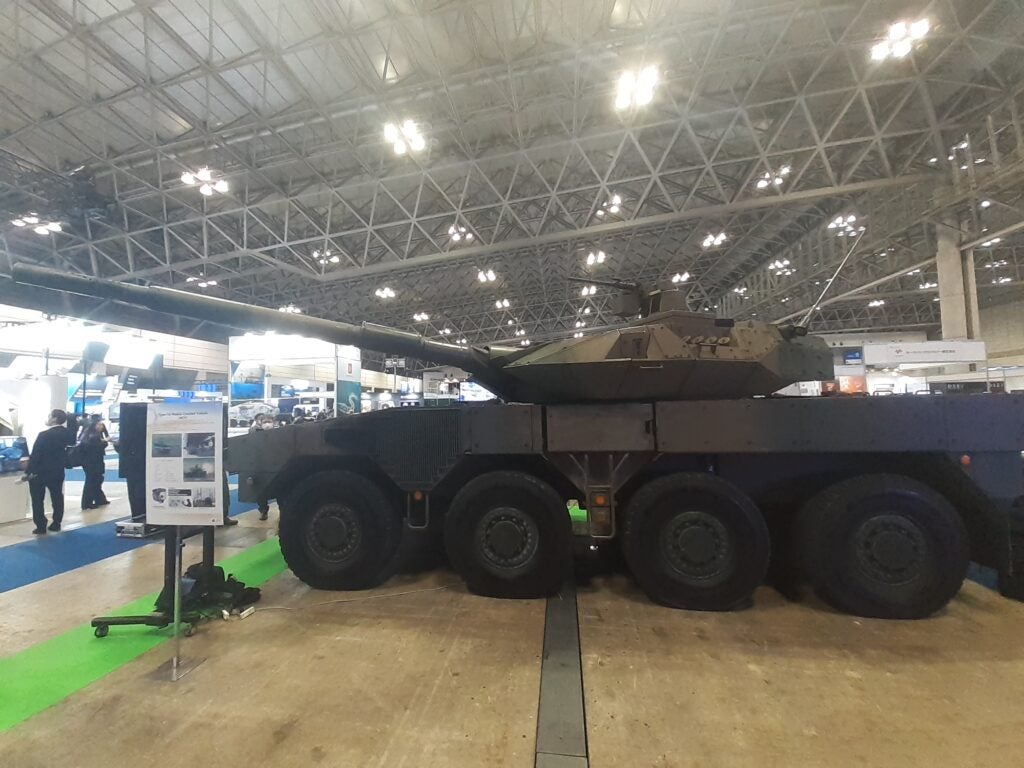
Armed with a 105mm main cannon and capable of reaching speeds of around 100 kilometers per hour, Mitsubishi Heavy Industry’s Type 16 is currently fielded by two types of units- five Rapid Deployment Regiments and two divisional Reconnaissance Combat Battalions. The vehicle is 8.4 meters long, 3 meters wide and has a height of 2.9 meters. Each has a crew of four; all crewmembers are part of the armored branch and don’t have a unique MOS that would differentiate them from tankers. The Type 16 MCV is also equipped with the latest fire-control systems which allow the vehicle to shoot accurately even when driving in zigzags and rough terrain. Its C4I capabilities are said to be “on par with the Type 10” and enable “real-time information-sharing with allied vehicles”.
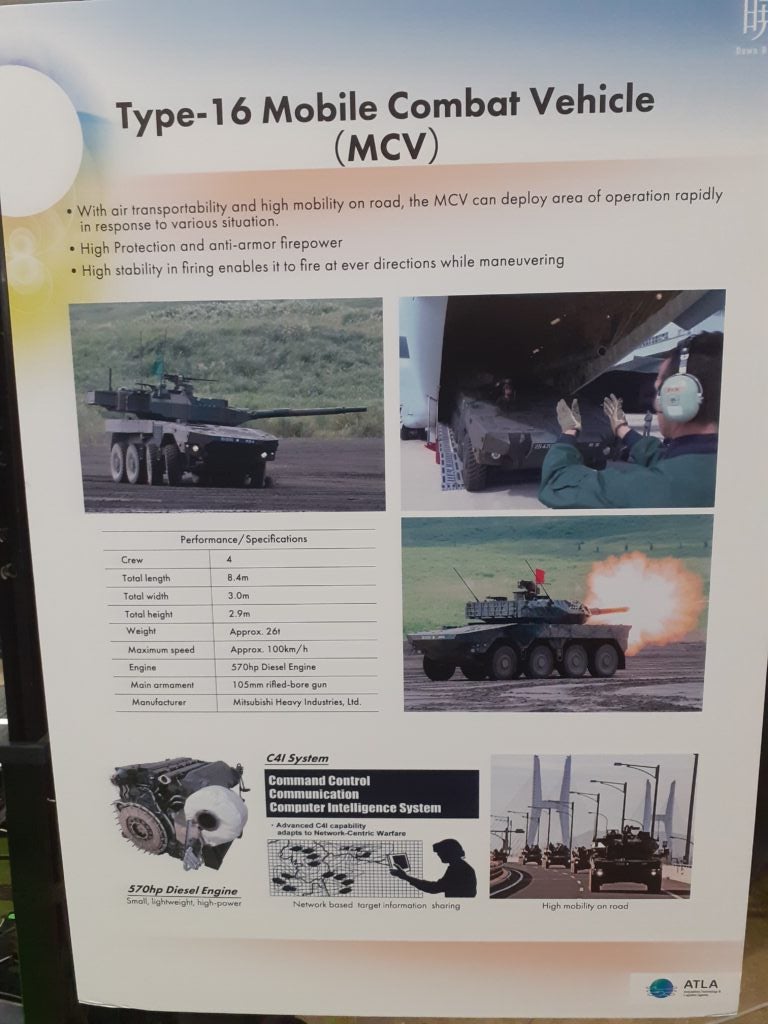
The vehicle is being introduced as Japan continues to move away from its Cold-War era force structure with a large force of heavier tanks intended to repel a Soviet landing in Northern Japan towards a force capable of countering China in Japan’s southern island chain. Unlike the JGSDF’s tanks, the Type 16 MCV can be deployed via organic Japanese airlift without US support. The vehicle weighs in at 26 tons; the Type 90 tank weighs 50 tons and the newer Type 10 weighs between 40-48 depending on the loadout. An additional logistics advantage of the Type 16 is that it is easier to maintain than the tanks. This is largely due to it being wheeled rather than tracked. Beyond that, the major stated that the maintenance load is similar.
According to the Japanese officers present, the main role which the Type 16 is supposed to play within the reconnaissance battalions attached to regular units is that of active renaissance or reconnaissance by fire. Within the Rapid Deployment Regiments, they will remain the best-armored organic fire support platform. However, as they lack the firepower and protection of regular armor, they have to rely more on maneuverability and combined arms with infantry and artillery to be employed successfully; this is particularly important in the initial combat stages where a Rapid Deployment Regiment could find itself alone and without heavier support. Shooting and scooting is something that the major says is being strongly emphasized when training Type 16 crews compared to tank crews. Drivers and commanders also need to be aware of the fact that, being a wheeled vehicle, the Type 16 may not be able to go all the places a tank could. The lieutenant-colonel then quickly added that when thinking of how a Rapid Deployment Regiment operates, the US Stryker Brigade Combat Team can be seen as very similar from a doctrinal standpoint. The Type 16 can be compared to a Stryker MGS.
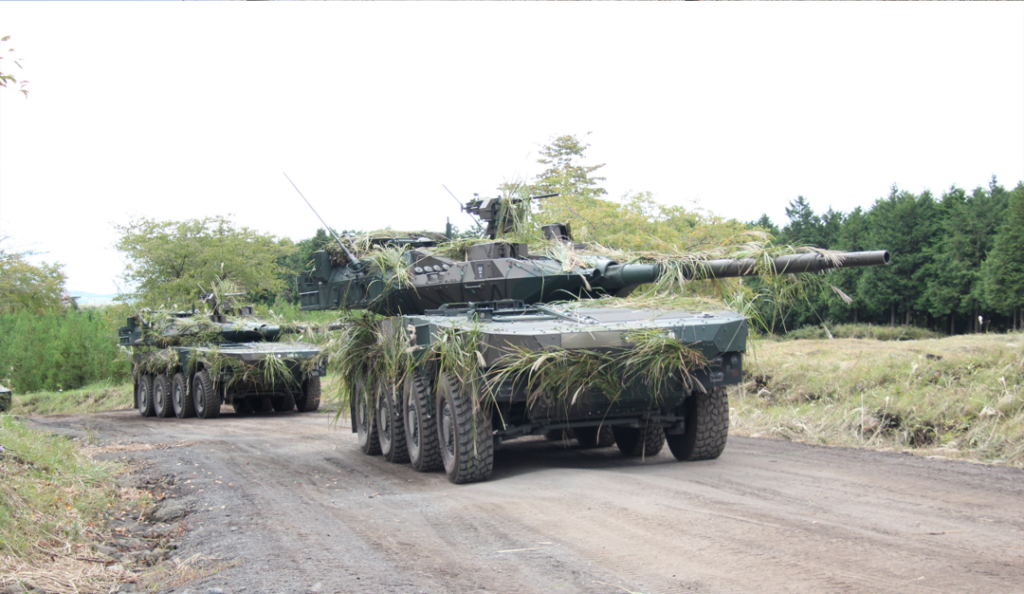
Within the Rapid Deployment Regiments, there are typically two companies of Type 16s. The exception is the 10th Rapid Deployment Regiment in Hokkaido which only has one (much of the heavier armor is concentrated in the North). While open-source analysts and media had previously speculated that type-16 companies may have 7 or 11 vehicles with 3 or 5 in two platoons and 1 in the command section, the JGDSF major denied this. According to them, Type 16s are organized into companies of 13 just like Japanese light armor. One vehicle goes to the headquarter section which oversees 3 platoons with 4 vehicles each. Within the reconnaissance battalions of regular divisions, which also field Type 87 Reconnaissance Combat Vehicles, the major remarked that he believes that Type 16 companies are organized in the same way.
Overt Defense also asked whether new units will be formed with the Type 16s acquired by the JGSDF in accordance with ATLA’s March 15th announcement. The major stated that as far as he knows, no new Rapid Deployment Regiments are being planned and that the 10th regiment will not be receiving an additional Type 16 company. However, there are plans to create new reconnaissance battalions which will field the Type 16 MCV.
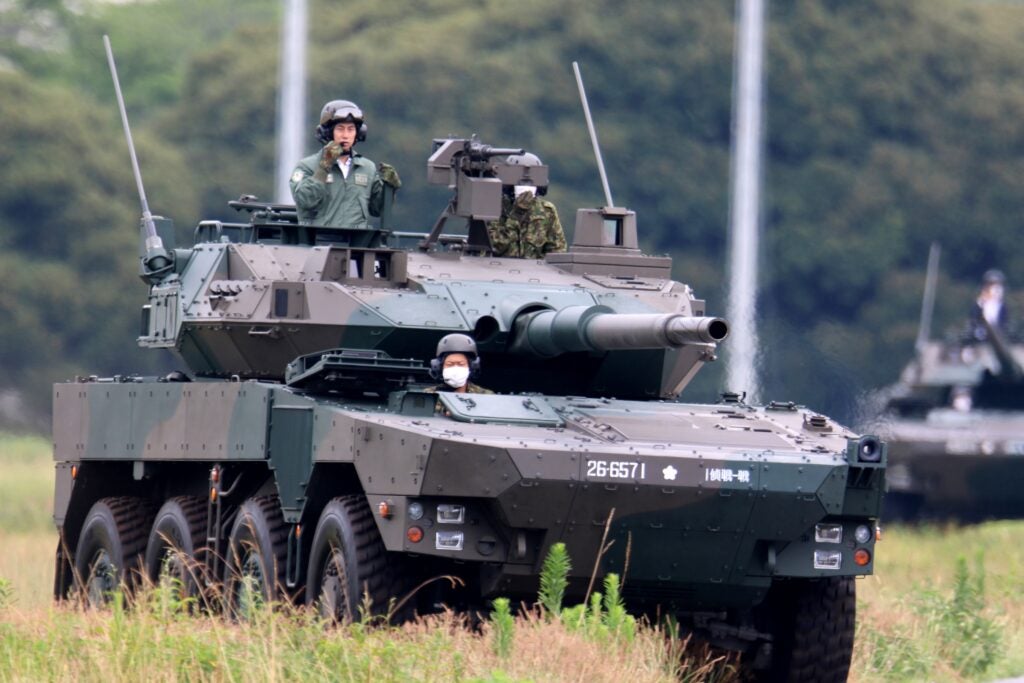
According to the officers, there is no difference between the Type 16s provided to reconnaissance units and those provided to the Rapid Deployment Regiments. Both are of the exact same variant. However, it is known that ATLA has requested the development of new Type 16 variants back in 2019 and that the latest order for new vehicles will include these variants.

